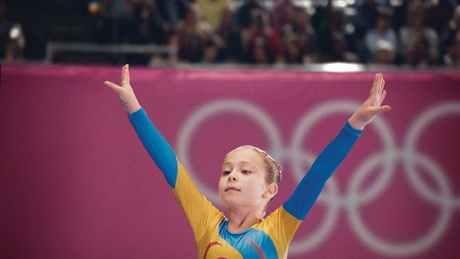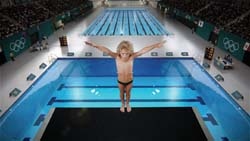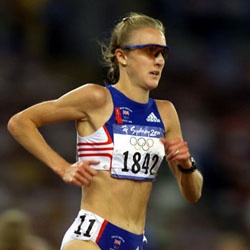Sponsors fall short of gold standard in first social media Olympics Featured
- Written by Publisher
Research seen by Marketing Week reveals that London 2012 sponsors must use social media in a more sophisticated way if their messages are to reach the global Olympic audience.

Reaching out: Brands must use social media to engage with their audiences
The day Britain picked up the Olympic flame from Athens in May was the day UK Twitter users began talking about the event in earnest. And they haven’t stopped since, which means the London Games will be the most digitally connected Olympics ever.
But while the Olympic buzz has undoubtedly grown louder among the UK’s social media community – with many athletes’ Twitter updates making the front pages of national newspapers - most of the Olympic sponsor brands don’t yet appear to be strongly associated with the Games on Twitter.
Worse still, YouGov’s BrandIndex tool, which measures brand health, shows that few of the sponsors appear to be significantly benefiting from their association with London 2012.
According to data from YouGov, seen exclusively by Marketing Week, the number of times the Olympics were mentioned on Twitter suddenly jumped on 17 May when Princess Anne received the flame in a ceremony in Athens. That began the Olympic torch relay, which will culminate with the opening ceremony of the Games in London on 27 July.
On the day the torch was collected, the word “Olympics” reached 39 per cent of the social network’s UK users via the Twitter accounts they were following, compared with a reach of just 21 per cent the day before, according to YouGov. On peak days, around two-thirds were seeing tweets containing references to the Olympics appearing in their feeds.
YouGov’s social media audience measurement tool SoMA analyses more than 10,000 UK-based Twitter accounts, giving a representative sample of the tweets seen by British users. YouGov group director of new products Andy Morris says: “The arrival of the Olympic torch in Britain caused a leap in discussion of the Olympics on social media that has continued to build ever since.”
The increased reach of the Olympics as a topic is an example of how social media is changing public awareness of the Games, and this has also prompted sponsors to alter their approach. At Procter & Gamble, which is a partner of the International Olympic Committee (IOC), Olympic project director Nathan Homer says the proliferation of internet-connected devices and vastly increased membership of social networks have created a new paradigm for global sporting events.
These will certainly be the most social Games by a long way. It will make a dramatic difference to the way people experience them
“These will be the most social Games by a long way. That is a result of the spread of the tools that people have and the number of people that have them. It will make a dramatic difference to the way people experience the Games.”
However, when Marketing Week analysed data from YouGov covering the worldwide sponsors of the IOC and the top two tiers of London 2012 sponsors, it discovered that the Olympics hasn’t been among the top five topics mentioned in relation to most of them since the torch relay began, showing that the majority of the sponsors are not making best use of their association with the Games. The only brands for which Olympic-related words are in the top five related topics in that time are Dow Chemical, McDonald’s, Omega, Visa, British Airways and ArcelorMittal.
And, for many of those brands listed above, the comments being made about them in connection with the Olympics have been predominantly negative. Only for Omega, which provides all the official timekeeping devices used at the Games, has the Olympics been a top-five topic of discussion on Twitter for mostly positive reasons since 17 May.
Indeed, other brands have received far more positive attention for other sponsorship properties – Adidas for the Euro 2012 football tournament, BP for its annual portrait prize and BT for securing Premier League football broadcasting rights next season.
Not all the Olympic sponsors will see an explicit association on Twitter with words and phrases such as “Olympics” as being a reliable measure of their marketing performance in social media, not least because many are prioritising Facebook, LinkedIn and other social networks.
For Lloyds Banking Group, social media is mostly a means to an end of making its Olympic activities more accessible to customers. Lloyds Olympic marketing partnership and group sponsorship Gordon Lott explains: “The ultimate measure for us is brand advocacy. We know one in three of our customers is more likely to recommend us when they are aware of our partnership and are given a chance to get involved. Social media is just a part of that.”

He claims that the bank has seen a doubling of monthly traffic to its London 2012 dedicated microsite, a trebling of its Facebook ‘likes’ and 30,000 views of its Games-related videos on YouTube. The brand is using Facebook for its two biggest social media projects associated with the Olympics. The first is soliciting photos from Facebook ‘fans’ of their experiences during the torch relay, and the second is asking spectators to tag themselves in a photographic record that follows the entire relay route in a similar style to Google Street View.
Lott says the Olympics has been a vehicle for Lloyds’ take-up of social media – something that is notoriously difficult for financial brands to achieve given the regulations preventing them from identifying their customers publicly. The Facebook page set up for the bank’s London 2012 activity could continue as a portal for promoting corporate social responsibility, he suggests.
“There are a vast number of community projects that we are involved in that we haven’t previously talked about. I can see a situation where those become much more prominent on our Facebook page.”
But while most sponsors will have more nuanced ways of gauging the success of their Olympic activity on social media, the basic level of their sponsorship’s reach is undoubtedly relevant, as is the resulting impact on perceptions of the brand. YouGov’s SoMA data, combined with that from its BrandIndex tool giving a daily snapshot of a brand’s health, shows that negative stories that achieve high reach on Twitter can also have an immediate impact on consumers’ attitudes.
For example, the biggest spike so far in Olympics-related Twitter mentions of sponsor McDonald’s came on 11 July, reaching 14 per cent of UK Twitter users. These mentions were mainly connected to an online petition objecting to the tax exemption that McDonald’s gained from its sponsorship of the Olympics. A spokesperson for the business says, however, that it had already decided before the petition not to claim tax exemption but this didn’t prevent a petition getting attention online.
The brand was also criticised that day because of a ban on rival food vendors selling chips to workers at Olympic venues. Over the course of the week, McDonald’s BrandIndex score fell significantly despite the company making concessions in both instances.
McDonald’s had received more negative publicity a few days earlier when its sponsorship of the Games, along with that of Coca-Cola, was called “obscene” by a cardiologist on the BBC’s Newsnight programme on 9 July. The two brands received different levels of attention on Twitter, though both experienced negative impacts on their brand perceptions.
In the week ending 9 July, the word “Olympics” reached 76 per cent of men, compared with 81 per cent of women. Yet the sponsors tend to have more success with men
YouGov’s Morris explains: “There was a minor spike in mentions of the brands on Twitter but a significant difference in their reach, with McDonald’s going from 5 to 7 per cent while Coca-Cola leapt from 9 to 23 per cent. This can be largely put down to the president of the American College of Cardiology serving as a Coca-Cola participant carrying the Olympic flame on the same day, and highly followed tweeters sharing this information.”
But while both brands experienced downturns in their BrandIndex scores around the time the stories broke, the long-term effects might not be particularly significant. Adidas similarly received unwelcome attention on Twitter after a shoe designed with a plastic ‘shackle’ was withdrawn for being reminiscent of slavery, but did not see a drop in overall brand perceptions.
McDonald’s BrandIndex score is virtually unchanged from its level when the Olympic torch relay began on 17 May. On that measure, it has done better in the run-up to the Games than most other sponsors, despite having experienced some of the worst publicity and social media backlashes in that time.
In fact, using an eight-week moving average, only five of the 16 sponsor brands that are covered by the BrandIndex survey have seen their overall scores improve by more than 0.1 index points. EDF has jumped six places in the past six weeks, sitting at number 17 of the 27 utilities companies listed on the BrandIndex survey, indicating that the assocation with the Games is boosting its standing. Most business-to-business brands do not feature in the tool.
It remains to be seen whether the Olympic sponsors will see a boost in either their reach or their brand health once the Games actually start. Given the immediacy of Twitter as a medium, the sponsors’ social media associations with the Olympics have perhaps not hit their peak yet. Coca-Cola says it will increase its social media activity substantially once the Games start, including a new Twitter account.
A spokesperson for the soft drinks brand says: “The new Twitter handle, @BeatTV, will act as the brand’s voice for Coca-Cola’s Olympic television show, Beat TV. Beginning on 30 July, the show, which will air in the UK on ITV for 10 days during the Olympics, will also be available on the web at coca-cola.com/theolympics.
“The @BeatTV Twitter handle will take followers behind the events and backstage on the set of Beat TV with various celebrities and athletes. Additionally, Coca-Cola’s global markets will have access to the show to localise within their countries.”
But there will also be more competition for attention on social media during the Games, as Olympics-related conversations are likely to be dominated by the events themselves. Non-sponsor brands are also likely to find ways to exploit the Games on social media without infringing the sponsorship rights.
Indeed, Cisco marketing director Ian Symes suggests that, rather than trying to rise above the clamour, the company is instead using links in its own tweets to direct people away from Twitter, so it can build awareness of its sponsorship on its own online properties.
“We use social media to drive traffic back to our dedicated London 2012 website,” he says. “The average dwell time is 24 minutes, whereas the average dwell time across business-to-business sites is three minutes. We drive all our conversations into the content on the website.”
While social media conversations will be a big part of how consumers in the UK and around the world experience London 2012, it looks increasingly hard for brands to make themselves heard on social networks. The sponsors’ best way of gaining positive social media associations in London this summer might be to focus their efforts on ensuring the event itself becomes a cause of celebration.
Q&A

Nathan Homer
Olympic project director
Procter & Gamble
Marketing Week (MW): Which of Procter & Gamble’s brands will be using social media at the Olympics?
Nathan Homer (NH): Social media is such a broad church that you would struggle to find a brand that is not doing it, but the corporate P & G brand, Gillette and Fairy are doing a significant amount around the Olympics. There are probably others doing less, but they will definitely all be playing some part.
The P&G brand is probably the lead brand in terms of social media. We launched our “Proud sponsor of mums” Olympic TV ad online and had nearly 10 million views worldwide on YouTube before we put it on TV.
MW: How does P&G decide which brands and which content fit best with Olympic marketing activity on social networks?
NH: Some of our brands naturally fit very well with the Olympics. Fairy is doing something called “Dishes of best wishes”, where people can design a dish online that says ‘Good luck to Team GB’. Other brands may decide they have good content from some of the athletes they sponsor.
When we get to Games time, instead of seeing month-long activity, you will see much sharper activity, highly relevant on the day certain athletes compete. That is not that different from what we have done over test events or trials.
MW: How does the Olympic content play into the brands’ general social media strategies?
NH: We know from our normal communications that if you link what people are seeing elsewhere to stuff that is in the social space you can amplify the effect you have. We have done that on some of our brands previously and we certainly will during the Games. As they watch Chris Hoy cycling, we will want to have some highly relevant Chris Hoy content, for example.
Most of our brands look at using social media. One of the things we are very clear on is that we do what is appropriate for a brand and for a campaign. If you go back a couple of years, there was a rush where every brand had to have a website, followed by a Facebook page, followed by a Twitter account. One of the things we learned very quickly is that if you don’t have the right content to use, those places are of no benefit.
MW: What is social media’s role in brand marketing for P&G overall?
NH: We are designing something that we have call ‘digital first’ marketing. We have moved away from the old days where you did TV and press, and everything else fed off that. We aim to use the best media to get the message across, and design the content to work around that. It’s not unusual that we’ll have a much clearer idea of what we are going to do in social media, and the TV ad may even come last, out of the back of that. It will always be led by the big idea, but the tone of voice and the brand character clearly are critical.
Women and the Olympics

The stereotypical audience for global sporting events is overwhelmingly male, but data collected from Twitter by YouGov’s SoMA tool reveals that in the run-up to the Games, the Olympics as a topic of discussion reached a higher proportion of Britain’s female Twitter users than its male audience.
In the week ending 9 July, the word “Olympics” reached 76 per cent of men, compared with 81 per cent of women. Yet the sponsors tend to have more success with men. Nine of the Olympic sponsor brands analysed by Marketing Week and YouGov have a reach among British men on Twitter that is more than one percentage point higher than it is among women. Only McDonald’s has a reach favouring women by more than that amount.
YouGov group director of new products Andy Morris says: “The Olympics themselves achieve high reach figures among both men and women while some of the sponsors tend to have more of an audience amongst men. Those brands may see the games as an opportunity to get their message to people who would not normally be hearing about them.”
Most of the sponsors’ marketing around the Olympics so far could not be said to be overtly targeting men or women. But one exception is Procter & Gamble, whose corporate brand campaign focuses on the role of mums in pushing the athletes to become successful.
Many of P&G’s brands, including Fairy, Ariel and Pampers, have a strong customer base among women, and have been closely linked with the P&G corporate brand campaign, promoting it as a “Proud sponsor of mums”. Washing-up liquid Fairy has been running a connected campaign, endorsed by marathon runner Paula Radcliffe, where children design plates and dishes with messages wishing luck to the British Olympic team (see Q&A, above).
According to P&G Olympic project director Nathan Homer: “It has plenty of interactive content for mums and families to play with. So clearly, they are pushing that quite hard.”
Among the sponsors, the biggest gaps in reach between men and women occur with British Airways and McDonald’s. BA reaches 22 per cent of British men on Twitter and 16 per cent of women, while McDonald’s figures are 27 per cent of women and 21 per cent of men.
Once the Games start, it is possible that the audience imbalance for the Olympics itself could shift the other way, as men become more interested in watching coverage of the events and in taking to social media to give their views. But in the run-up, women on Twitter have shown the greater interest in the Olympics, and sponsors that have appealed to them online could have benefited as a result.
Olympic Broadcasters

Eurosport: Will offer exclusive content on its social media sites
In the UK, the BBC and Eurosport are the two official TV broadcasters of the Olympic Games, but a wide selection of competing media companies and even spectators themselves can report live from events online, just as long as they aren’t publishing video content commercially. According to BBC Olympic sports reporter Ollie Williams, who is co-ordinating the BBC’s social media activity around the events, the broadcaster will use its exclusive highlights as a way of setting its social media coverage apart from other outlets.
“A lot of what we do around social media will be driving our audience towards what we are able to offer, not just in terms of video but audio as well,” he says.
Exclusive content is also a large part of what Eurosport will offer. According to global communications director Heather Bowler, the interaction between TV coverage and social media at London 2012 will demonstrate how far the broadcaster’s approach has developed since it first began using social networks. Eurosport originally saw them as a means of delivering messages explaining that coverage of an event had overrun, impacting on subsequent programmes.
“Social media was a way for us to give information to our viewers, so they didn’t get frustrated. It started out as creating a service, but it quickly became evident to us that what the community was looking for was exclusive content. They want video clips, pictures and interactive content,” says Bowler.
As well as promoting live coverage and immediately relevant content in real time, Bowler suggests that Eurosport also needs to bring users into longer-running debates and attract them to feature programmes. In fact, she says this is one of the main measures of success for Eurosport’s coverage, and is hoping to exceed the level of interest generated in its programming around the 2008 Olympics in Beijing.
“We have smudged the lines with television to create a more social and interactive way for the fans to engage directly with Eurosport about the TV coverage and about what is going on in the sports world,” she says.
At the BBC, social media will be integrated into the broadcaster’s own websites during the Games, as part of its ambitious project to create a web page for every single athlete competing in London. Many of these - particularly Great Britain’s athletes and prominent names from other teams - will also have their Twitter feeds connected to the BBC website so their tweets show up there automatically.
The athletes have signed up to social media restrictions imposed by the International Olympic Committee, banning ambush marketing, but Williams says there are also controls in place to ensure the BBC doesn’t inadvertently publish questionable content posted by athletes.
“They go through an automated process, albeit quite a complicated one. There is a ‘white list’ established of all the athletes we are happy to have as part of that feed. Before it reaches the website, we take out anything we can plan for that could be offensive. We also have a very swift override facility should anything break our own editorial guidelines,” says Williams.
For the Olympic broadcasters, a confident grasp of social media is a prerequisite. As ‘second screening’ tendencies increase among the viewing public, the official broadcasters need to ensure they are providing distinctive and insightful commentary for those who are following Olympic events on social networks and websites, as well as – or instead of – TV and radio.
But, as Williams points out, most important to the viewing public is the access that the “two-way street” of social media affords them to journalists reporting from the events, and the accompanying ability to debate with their peers. “Maybe it’s not as valuable as having the live video rights, but I think it means a lot to our audience,” he says.
Eurosport’s Bowler concurs: “Second screen activity is getting bigger, but it is not the dominant thing right now. It probably could be in time, but people who are sports fans love to interact and express themselves, and I think that ability to share and engage with other loyal fans, not just with us, is very big.”
References
- ^ Watch a video Q&A with P&G’s Nathan Homer here (www.marketingweek.co.uk)









